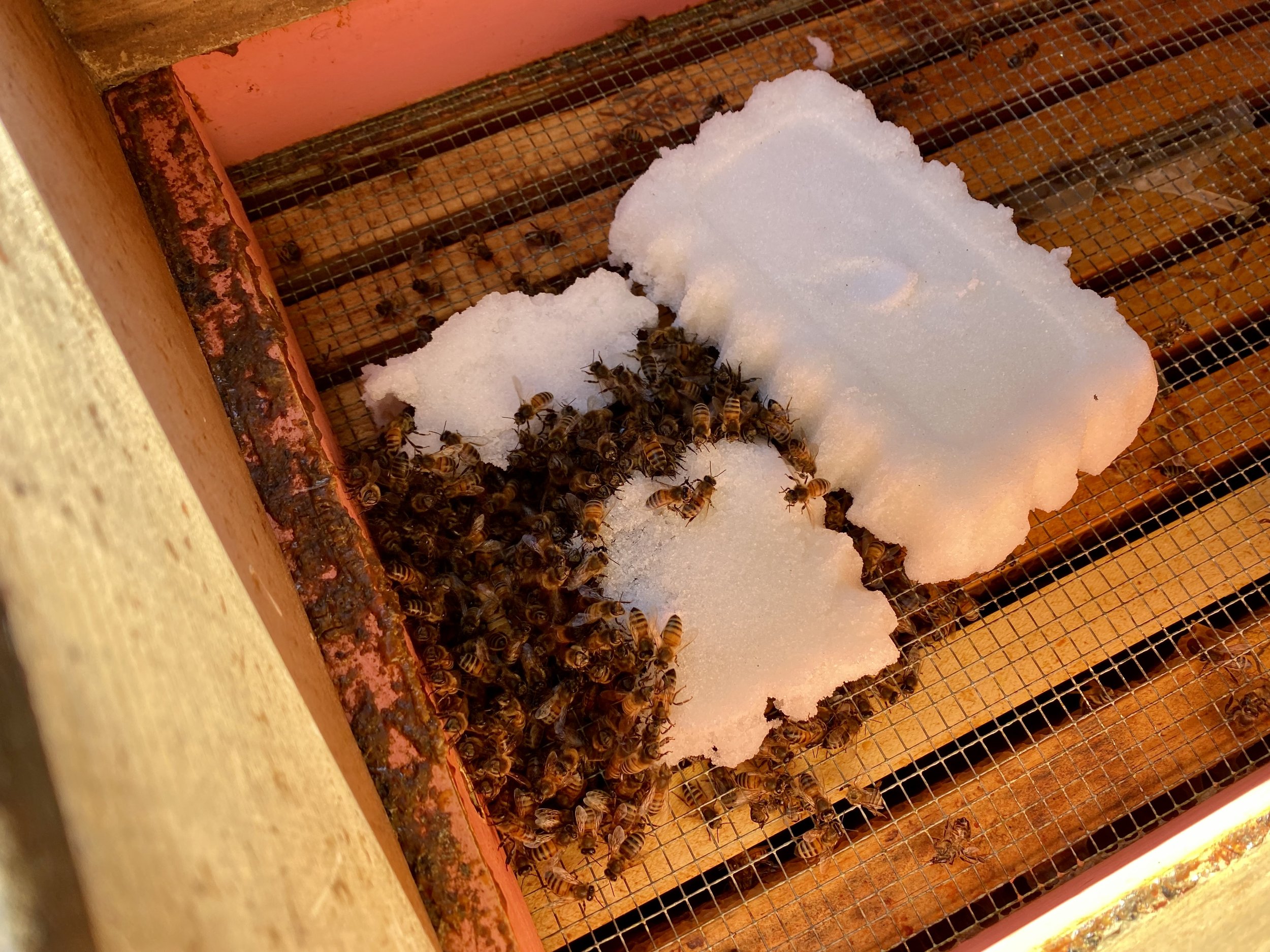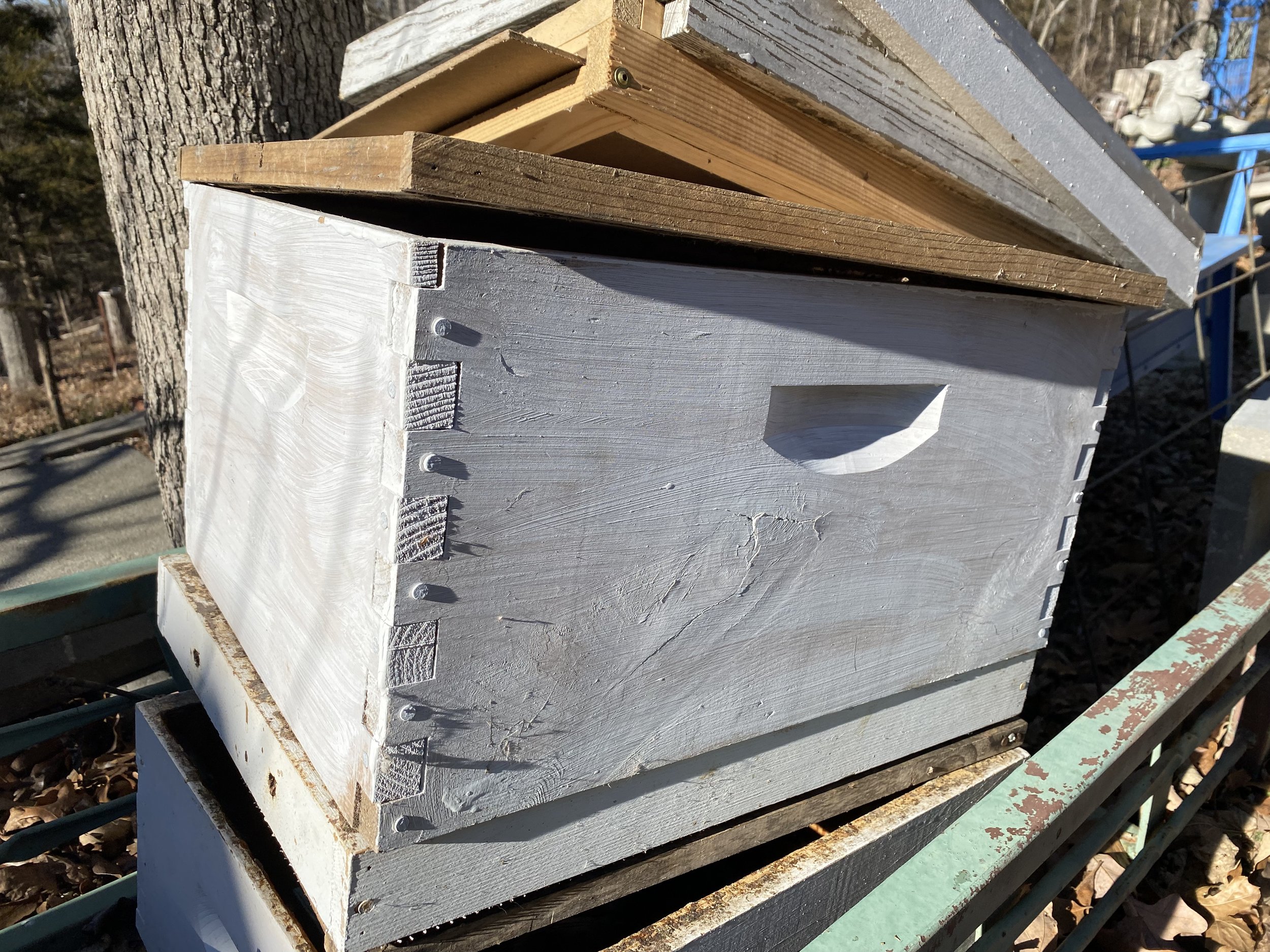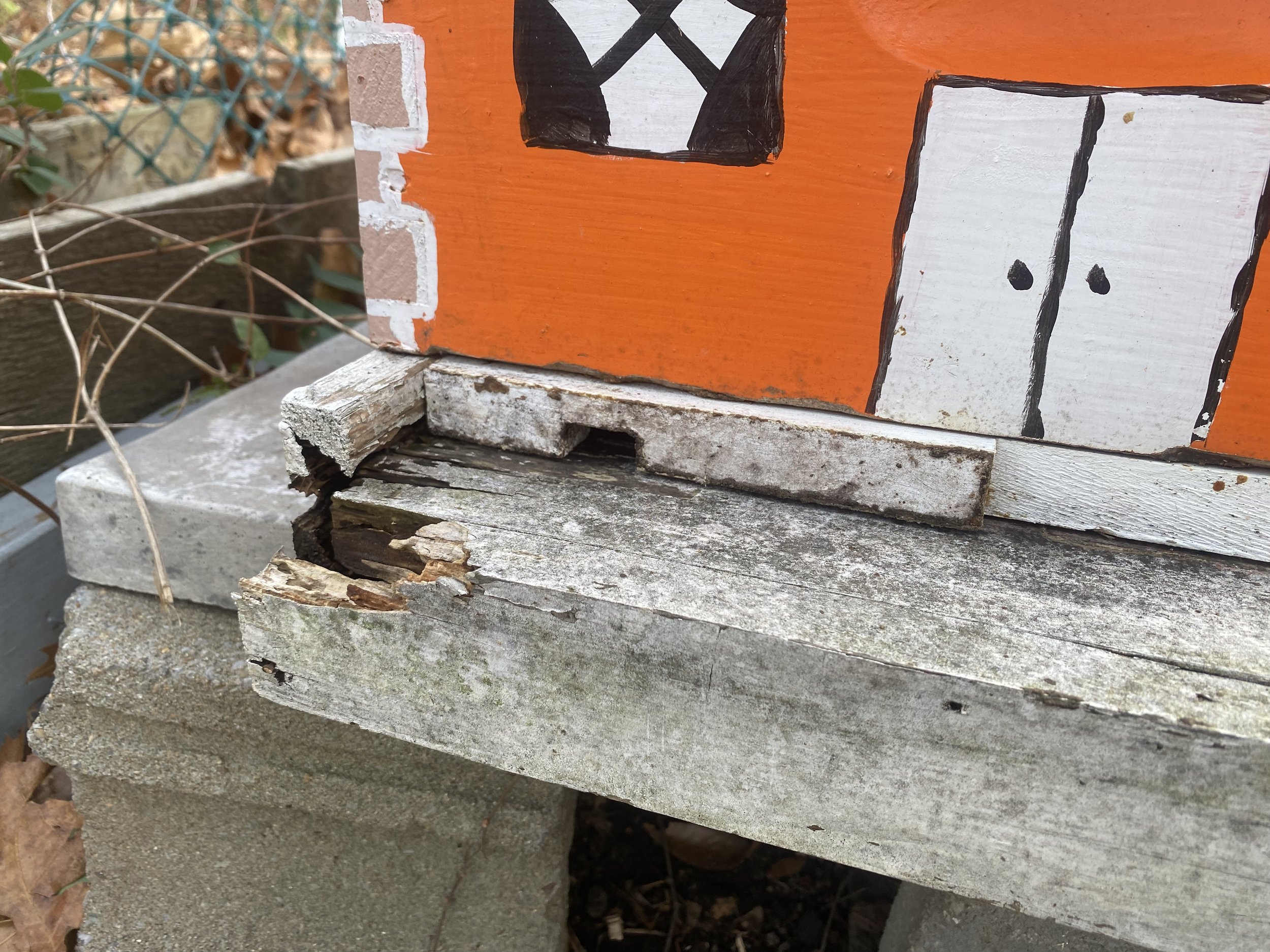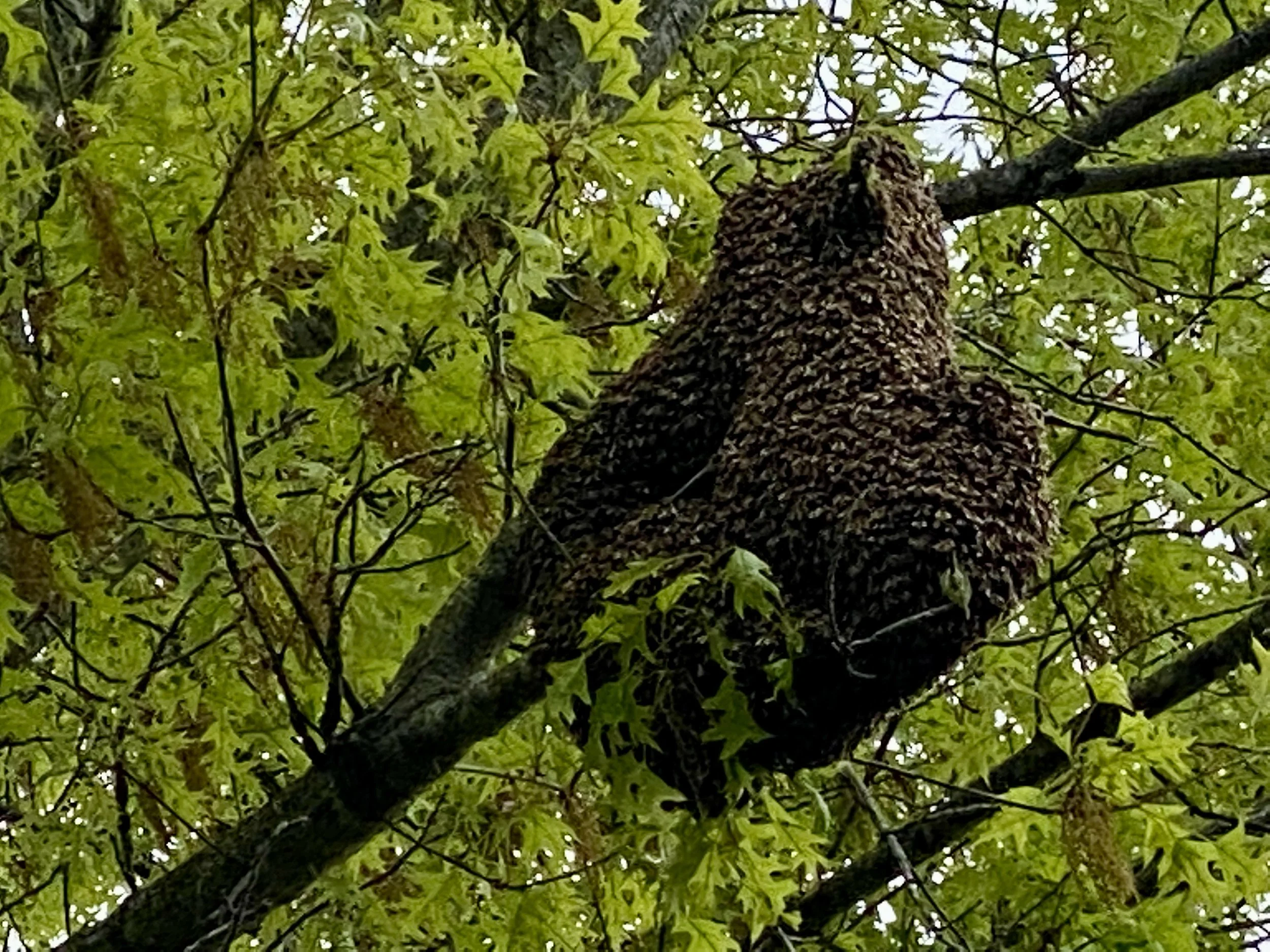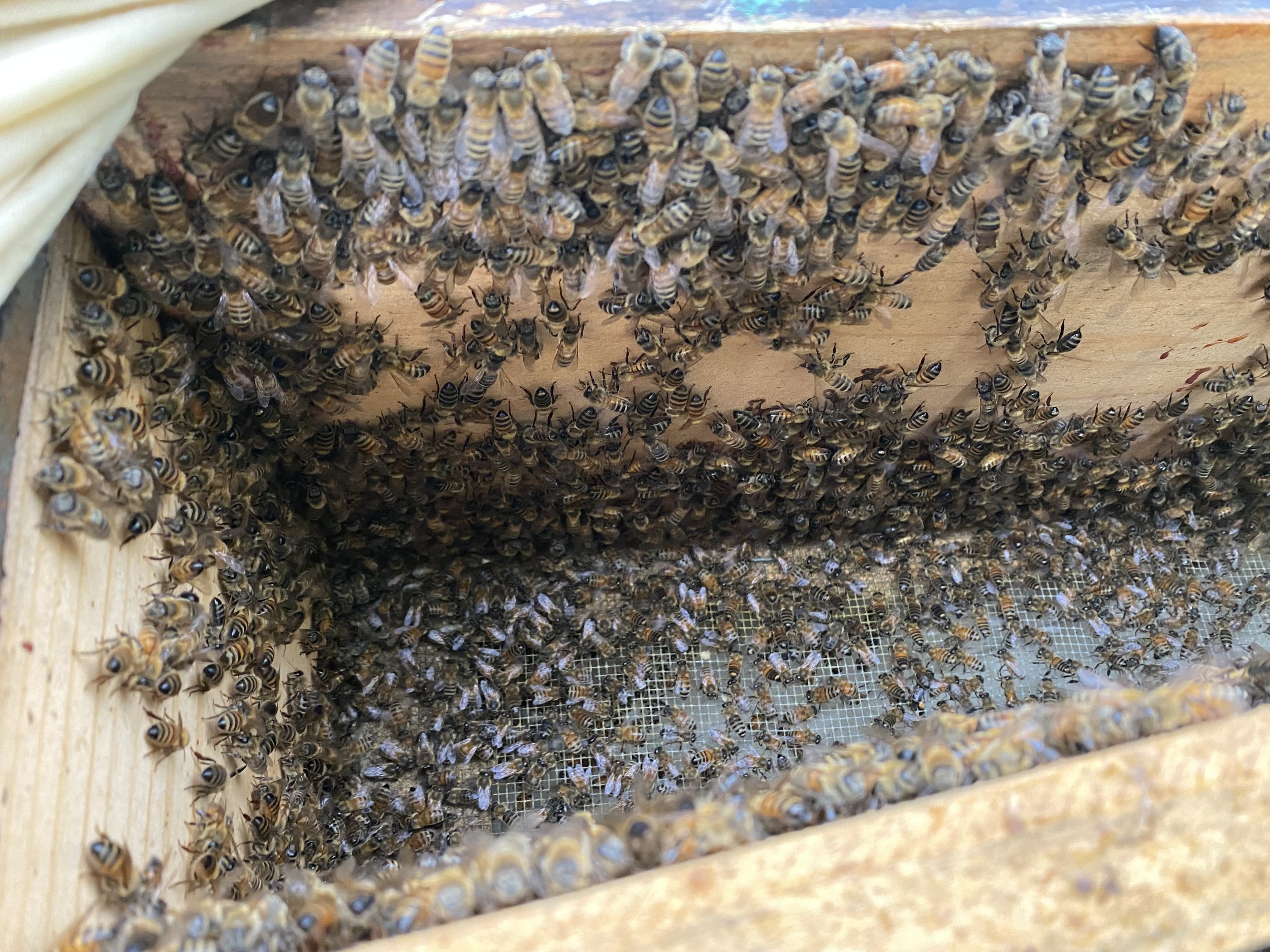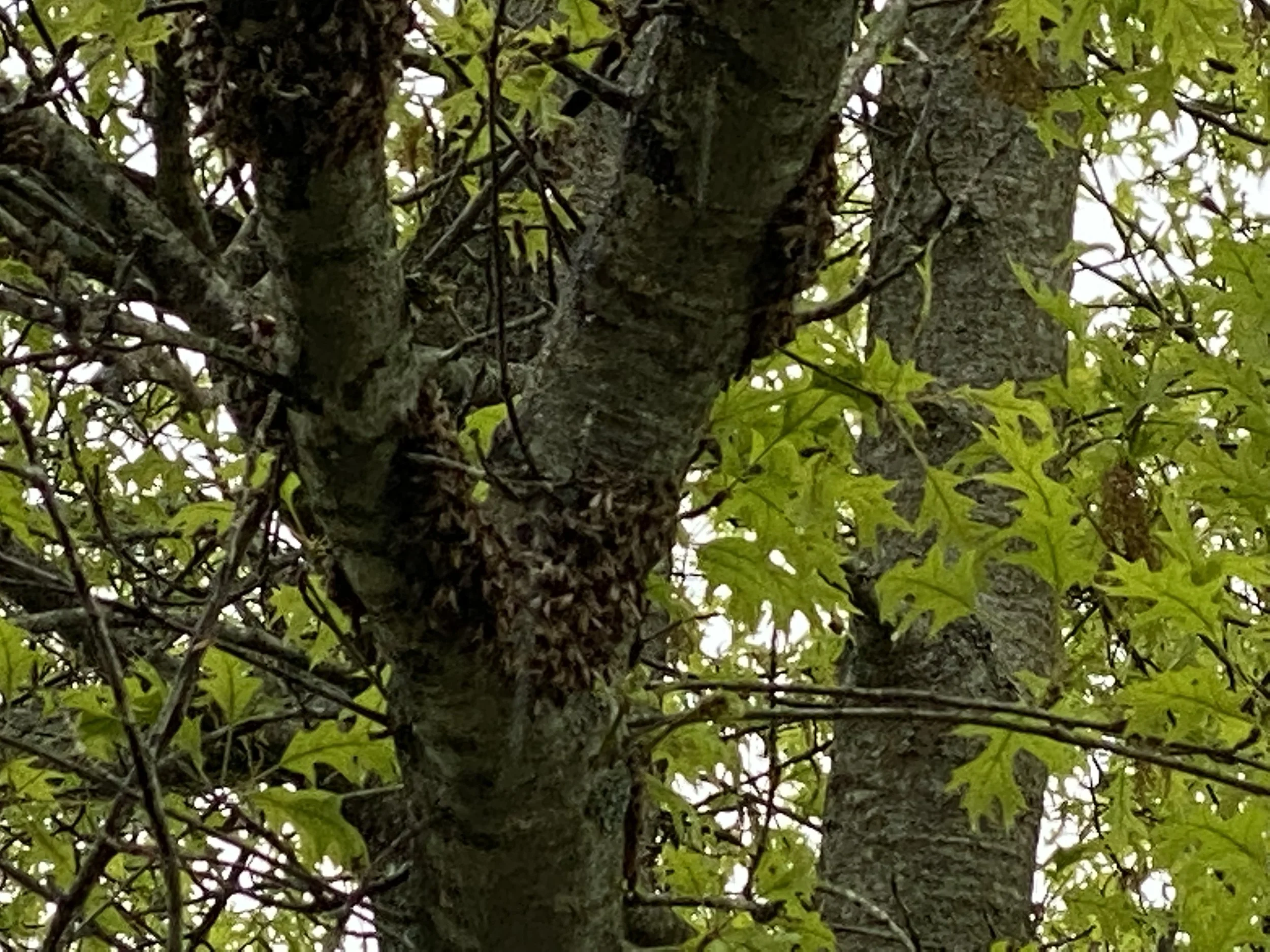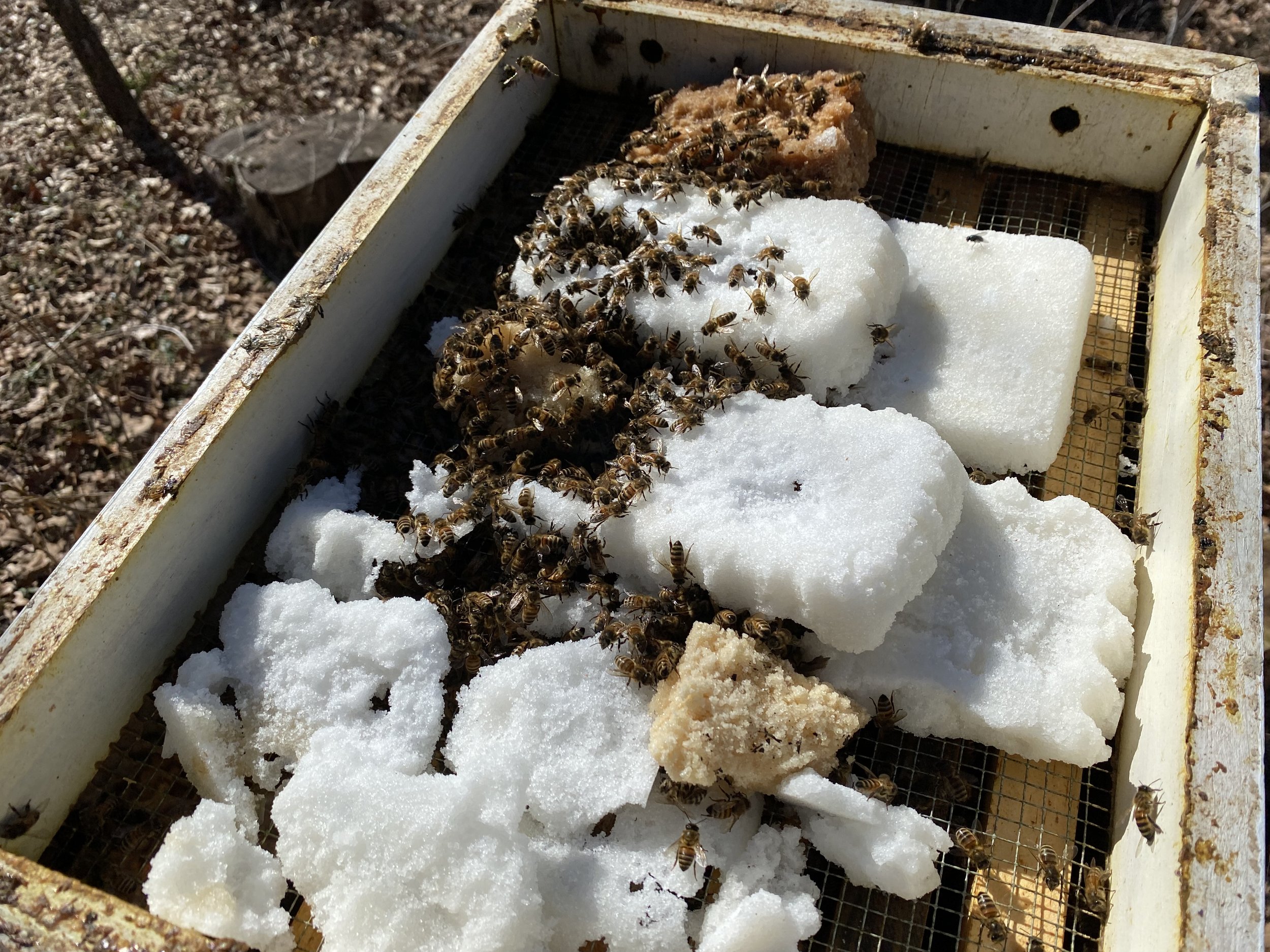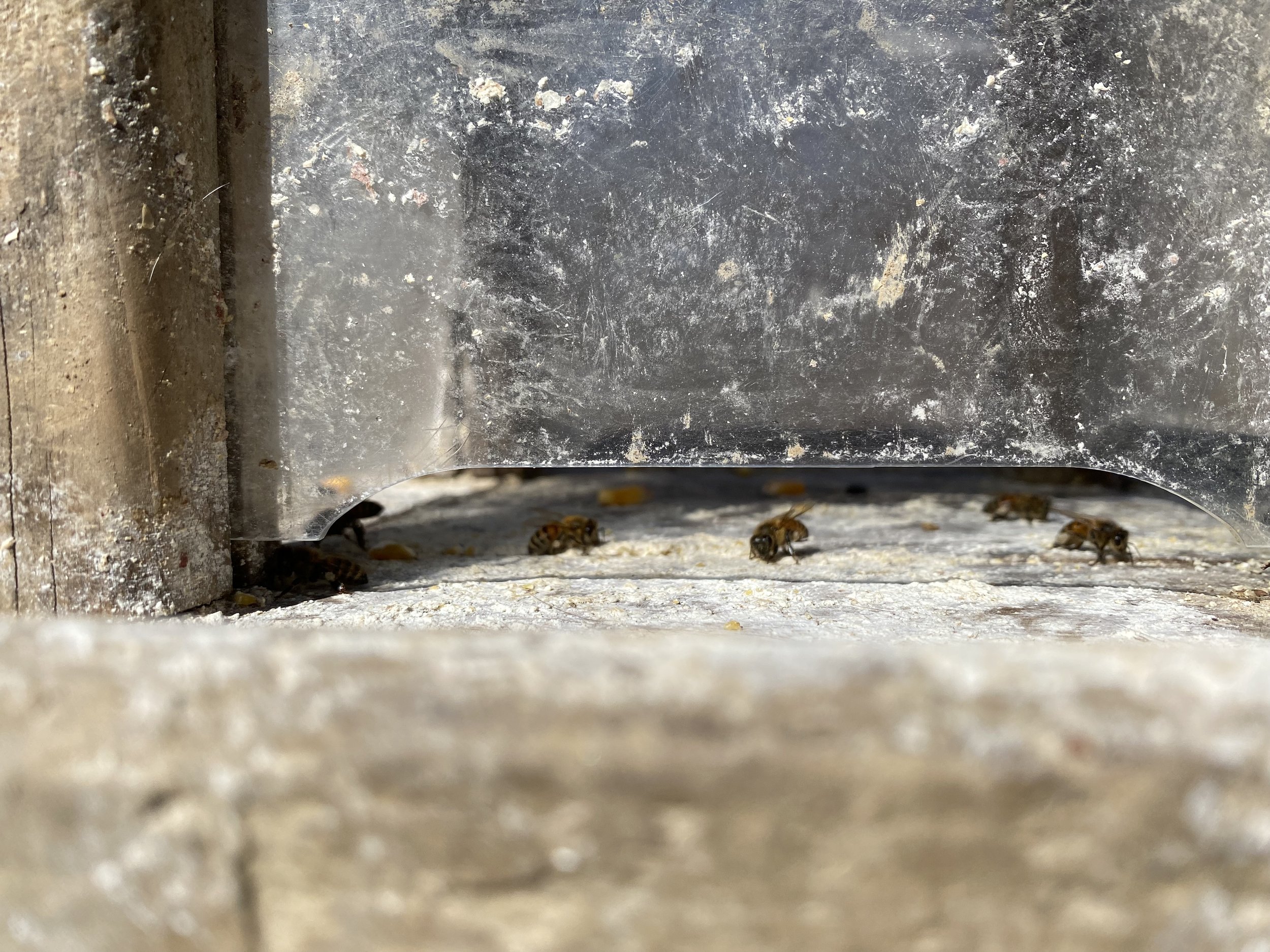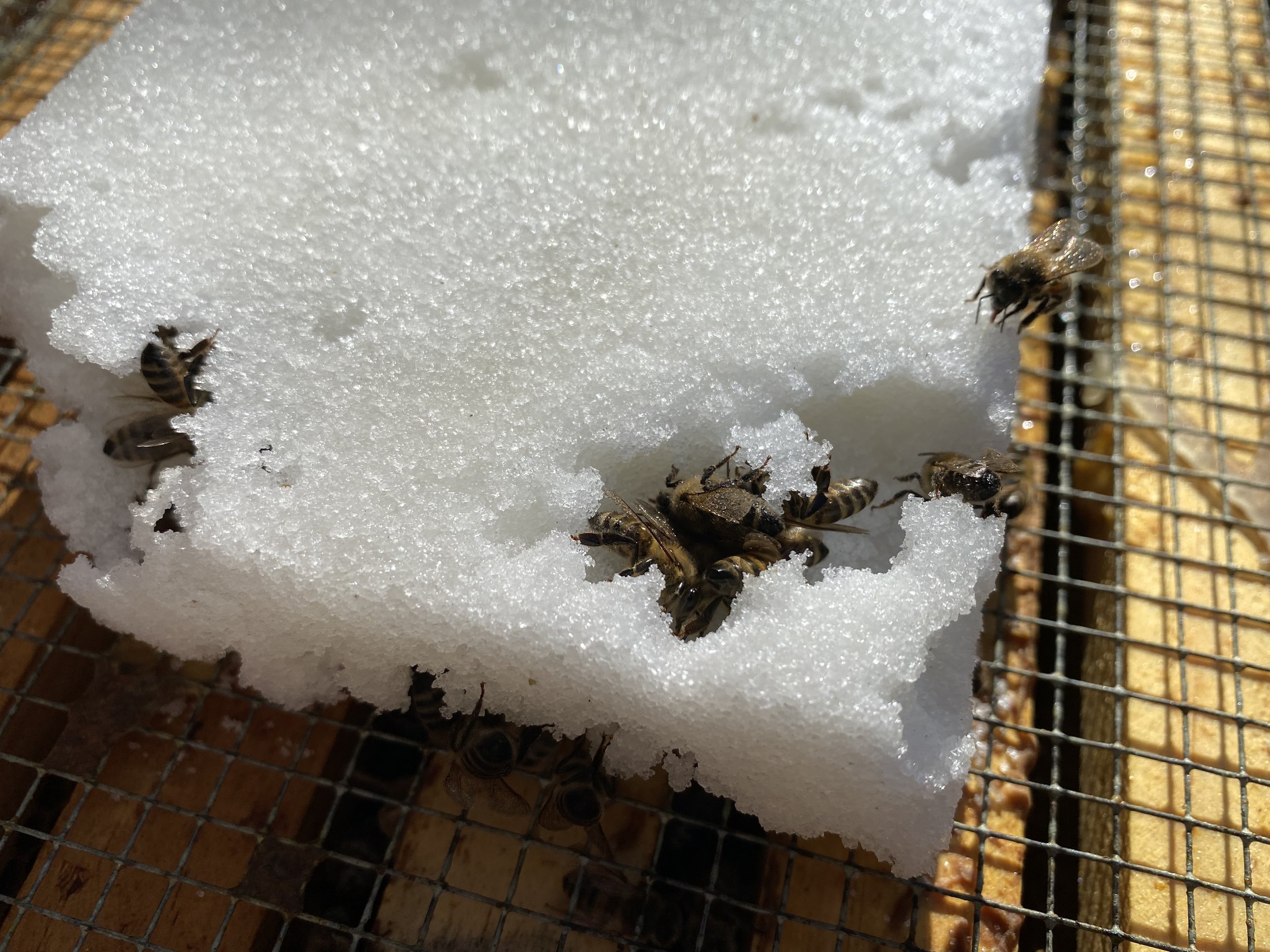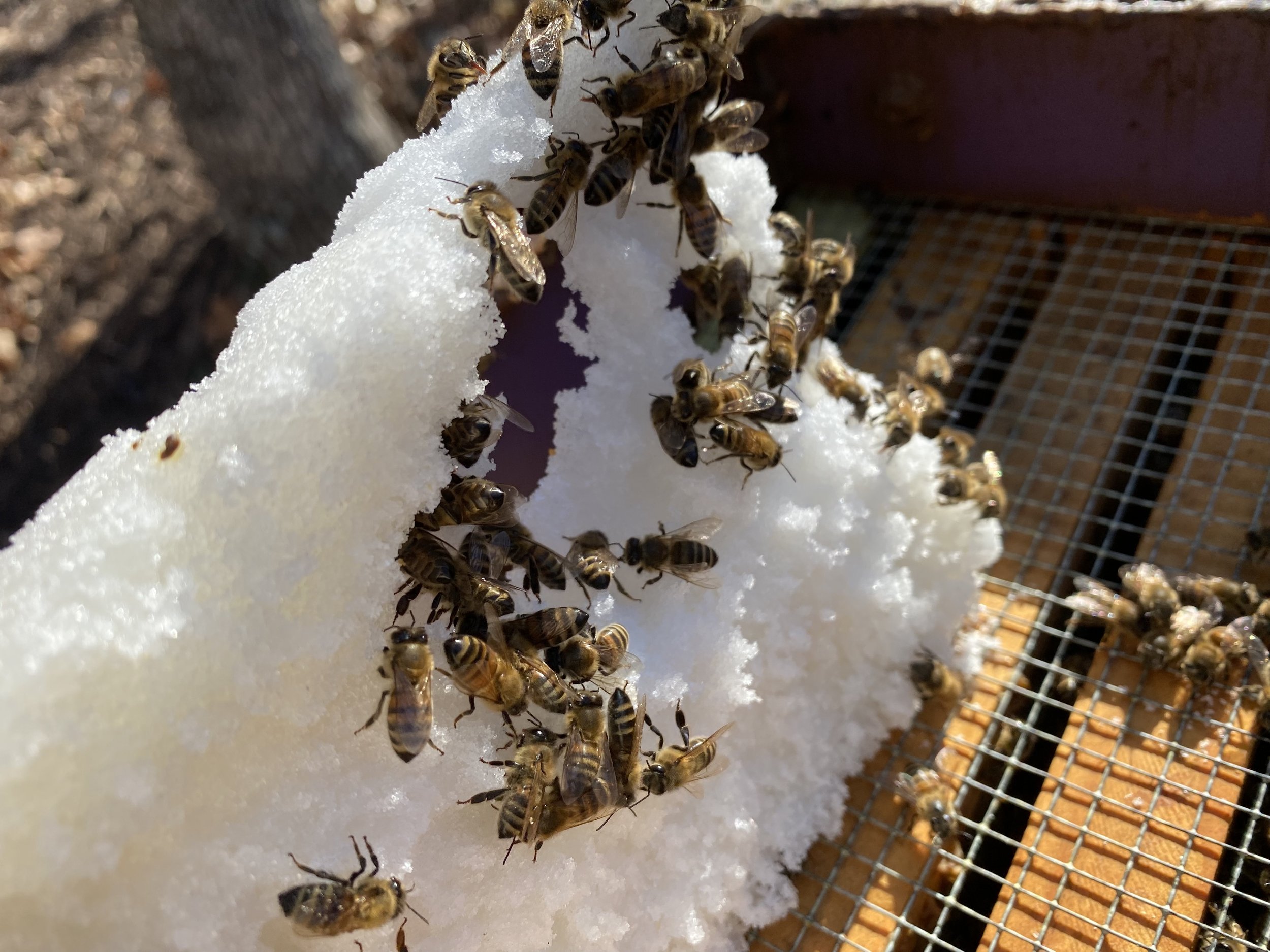Why Bees Die Late Winter
/one of my colonies has a sugar patty in case they run out of honey. (charlotte ekker wiggins photo)
Why Bees Die Late Winter
By February and March, the worst of the cold is usually over, yet many beekeepers find their colonies have died. No matter how long we’ve been keeping bees, it’s never pleasant to realize a colony didn’t make it. Don’t let it go to waste, learn from what you see. Here are 10 reasons why this happens:
1. Starvation
Bees cluster tightly in winter, and if food is just inches away but the cluster can’t break to reach it, they may starve even with honey left in the hive. Late winter starvation is common when bees start raising brood but have little accessible food.
2. Moisture Buildup & Condensation
Bees generate heat through clustering, but if the hive isn’t well-ventilated, warm air rises and condenses on the cold inner cover, dripping back down onto the bees and chilling them. Wet bees die quickly in cold temperatures.
3. Cold Snaps & Small Clusters
A small cluster struggles to generate enough heat to survive. If a warm spell allows them to break cluster and then a sudden cold snap hits, they may not be able to regroup in time.
4. Nosema (Dysentery-Like Disease)
Nosema is a fungal infection that weakens bees' immune systems, leading to diarrhea-like symptoms. If bees defecate inside the hive due to prolonged cold weather, disease spreads, weakening or killing the colony.
5. Queen Failure
If the queen dies or is failing in late winter, the colony cannot replace her, leading to dwindling population and eventual collapse. A poorly mated or aging queen may not lay enough eggs to replace dying workers.
6. Varroa Mite Damage
Colonies that enter winter with high varroa mite loads are often doomed by late winter. Varroa mites spread at least 4 dozen or more viruses that weaken bees, and once brood-rearing resumes, infected bees may emerge weak or not at all.
7. Pesticide Residues in Stored Pollen
Bees store pollen from late summer and fall to feed winter brood. If those pollen stores contain pesticide residues, it can negatively impact young bees emerging in late winter, reducing their lifespan and weakening the colony.
8. Lack of Fat Winter Bees
Healthy winter bees are raised in the fall with high fat stores to survive months without foraging. If colonies had poor nutrition or brood diseases in fall, they may not have developed enough robust winter bees to sustain the cluster.
9. Robbing & Weak Colonies in Fall
If a colony was robbed by stronger hives in fall, they may have entered winter with low food stores or weakened populations. This makes late winter survival much harder.
10. Poor Hive Management
Beekeepers who fail to provide emergency food (sugar bricks, fondant), proper ventilation, or varroa control often see their colonies die in late winter, when stressors hit hardest.
For more weekly beekeeping, gardening, cooking and easy home decor tips, subscribe to Garden Notes.



